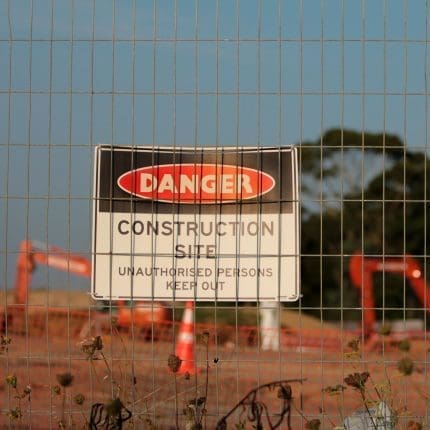- Shop All Documents + Bundles
- FORS V7.1 Document Bundle | Bronze (15 Policies)
- Transport Manager Compliance Pack (10 Policies)
- Transport Manager Compliance Pack (6 Policies)
- Health & Safety Policy Template
- Fuel, Emissions And Air Policy Template
- Operational Security Policy Template
- Serviceability And Roadworthiness Policy Template
- Road Traffic Collision Policy Template
- Counter Terrorism Policy Template
- Load Safety Policy Template
- Vehicle Routing And Scheduling Policy Template
- Driving Standards Policy Template
- Driving Hours Policy Template
- In Cab Technology Policy Template
- Passenger Safety Policy Template
- Complaints And Grievances Policy Template
- Drug And Alcohol Management Policy Template
- Hazard And Risk Identification Policy Template
- VOR (Vehicle Off Road) Policy Template
- Tyre + Wheel Policy Template
- Health & Eyesight Policy Template
- Transport Infringement Policy Template
- Walk Around Check (Defect Check) Tool Box Talk Template
- Transport Manager CV Template
- Social Media Policy Template
- Transport Manager Contract Template
- External Transport Manager Contract Template
- Driver Handbook
Transport UK > Transport Manager Shop > Hazard And Risk Identification Policy Template

Transport Manager Compliance Pack (10 Policies)
£110.00 Original price was: £110.00.£55.00Current price is: £55.00. ex.VAT

Drug And Alcohol Management Policy Template
£11.00 ex.VAT
Hazard And Risk Identification Policy Template
£11.00 ex.VAT
It is important to maintain actively maintain a robust Hazard And Risk Identification Policy.
⧉ PREVIEW: View our Test Document here to sample the format.
| Brand |
Transport UK |
|---|---|
| Document Format |
PDF [Digital Download] |
| Legislation |
UK Law |
| Transport Manager |
Hazard And Risk Identification ,Transport Manager CPC |
| Document Author |
Transport UK Industry Professionals |
| Technology |
Strictly No Artificial Intelligence (AI) Copywriting |
| How To Edit |
Microsoft Word |
| Product Type |
Digital Product [Downloadable] |
7
People watching this product now!
Description
A Hazard and Risk Identification Policy is a vital document that outlines guidelines and procedures for recognising, evaluating, and addressing potential hazards and risks within an organisation. This policy is essential to ensure a safe, secure, and healthy working environment. Here are the reasons why having a Hazard and Risk Identification Policy is important:
1. Workplace Safety: The primary focus of the policy is to prioritise the safety and protection of all employees. This includes implementing measures to identify and mitigate hazards and risks that could lead to accidents, injuries, or harm.
2. Regulatory Compliance: The policy ensures compliance with relevant health and safety laws and regulations. Adhering to these standards helps to avoid legal penalties and ensures the organisation meets national safety requirements.
3. Proactive Risk Management: The policy helps to identify potential risks before they result in incidents. Proactively addressing safety concerns reduces the likelihood of workplace accidents and enhances overall employee security.
4. Emergency Preparedness: The policy should outline procedures for identifying and managing risks associated with emergencies, including natural disasters, industrial accidents, and other unforeseen events. Preparedness ensures a swift and effective response, minimising harm to employees and property.
5. Training and Awareness: The policy should emphasise the importance of training and awareness for all employees. Regular training on hazard identification, risk assessment, and safety protocols ensures staff are well-prepared to recognise and address potential risks.
6. Inspection and Maintenance: The policy should include guidelines for the regular inspection and maintenance of equipment and facilities. Ensuring that all infrastructure is in good working condition is critical for preventing hazards and maintaining a safe work environment.
7. Employee Conduct: The policy should establish guidelines for safe conduct in the workplace. Clear rules regarding behaviour, use of personal protective equipment, and adherence to safety instructions contribute to overall safety.
8. Accessibility: The policy should address the needs of employees with disabilities or special requirements. Providing accessible options and assistance ensures that all employees can work safely and comfortably.
9. Incident Reporting: The policy should establish procedures for reporting and investigating safety incidents. Prompt reporting and thorough investigations help to identify root causes and implement corrective actions to prevent recurrence.
10. Communication and Information: The policy should ensure that employees are informed about safety procedures and guidelines. Providing clear instructions and information enhances awareness and cooperation in maintaining safety.
11. Health and Hygiene: The policy should include measures for maintaining health and hygiene standards, particularly in the context of infectious disease outbreaks. Ensuring a clean and sanitary environment helps to protect employee health.
12. Monitoring and Evaluation: The policy should establish procedures for monitoring and evaluating the effectiveness of safety measures. Regular reviews and updates ensure that the policy remains effective and relevant in addressing workplace safety challenges.
A well-structured Hazard and Risk Identification Policy is crucial for organisations, as it ensures the safety and well-being of all employees. By establishing clear guidelines and expectations, the policy contributes to a secure, reliable, and healthy working environment. The policy should be regularly reviewed and updated to ensure it remains relevant and effective in managing workplace hazards and risks.
Reviews (0)
Only logged in customers who have purchased this product may leave a review.
How does it work?
We will deliver this digital document (PDF) instantly to you by email when you purchase it.
- Purchase
- Download
- Add your company logo/details
- Adjust/tailor to your requirements
- Be compliant
⧉ Want to try before you buy? View our Test Document here to sample the format in which our documents are made available to you.
Templates you can trust
Our templates are written by transport professionals with a combined 100 years experience in the industry, managing complex and large fleets.
Strictly NO artificial intelligence (AI) copywriting is used in our policies and documents.
You may also like…
Transport Manager Compliance Pack (6 Policies)
Driving Hours Policy, Driving Standards Policy, In Cab Technology Policy, Road Traffic Collision Policy, Tyre + Wheel Policy, VOR (Vehicle Off Road) Policy, Compliance Document Bundles
Rated 5.00 out of 5
Related products
FORS V7.1 Document Bundle | Bronze (15 Policies)
Complaints And Grievances Policy, Counter Terrorism Policy, Driving Hours Policy, Driving Standards Policy, Fuel, Emissions And Air Policy, In Cab Technology Policy, Load Safety Policy, Operational Security Policy, Passenger Safety Policy, Road Traffic Collision Policy, Serviceability And Roadworthiness Policy, Tyre + Wheel Policy, Vehicle Routing And Scheduling Policy, Compliance Document Bundles
Rated 5.00 out of 5














Reviews
There are no reviews yet.